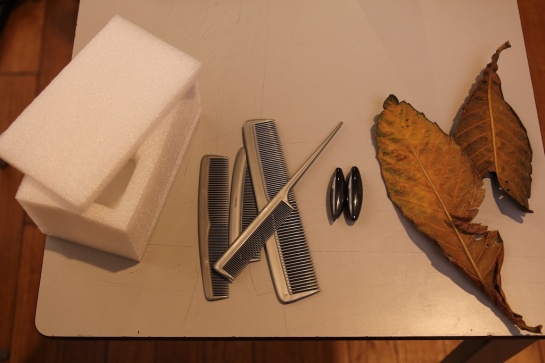Just a little example of the attention to detail I’m trying to bring to the sound rebuild:
As before, the sounds for the ‘traces’ – the little trails of particles that are left behind by user movement in the space – which I think might be one of the key interaction sounds, is made up of little clicks which set off (pitched) resonant filters.
In Istanbul and London, these clicks were made synthetically (just a tiny burst of white noise with an envelope) – they had no ‘texture’ to them and were all exactly the same.
What I want to do now is for every click to be different, and for the clicks for each portal to be very slightly different to the others. To do this, I’ve gone back to my musique concrete roots, and have used recorded sounds instead of synthetic ones. I’ve found four sources that are excellent sources of clicks – polystyrene packing material, combs, magnetoids (anyone remember them?) and dead leaves (from the back yard of the Transcultures house). I’ve recorded a stretch of sound for each of them, and then edited out every seperate little click. So now, each portal has over 100 clicks to choose from, which makes a subtle but crucial difference, and makes the whole thing a little more ‘alive’ somehow.
It’s the little things..

